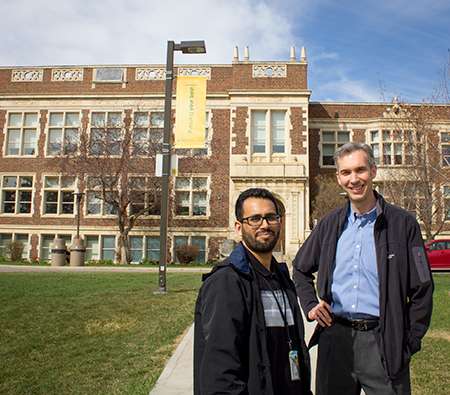Alberta's older injured workers at disadvantage in returning to jobs

Alberta's greying workforce means more senior citizens are on the jobsite than ever—a group that is "disadvantaged" when it comes to workplace injuries, according to new University of Alberta research.
PhD student Fahad Algarni reviewed 8,000 workers' compensation claims for Albertans between the ages of 25 and 80 who suffered bone and joint injuries on the job. He found that workers over 65 years old—two per cent of the total—were at greater risk of severe injury yet were less likely than younger workers to be offered modified work duties or rehabilitation.
"These older, injured workers are a disadvantaged group. They are more susceptible to serious injuries—fractures, dislocations—possibly due to aging-related physical or biological changes and they weren't triaged the same as younger workers when it comes to rehabilitation," said Algarni, who is studying rehabilitation science. "What we are looking at with our research is how can we best facilitate their return to work."
Algarni's supervisor and study co-author Doug Gross is an expert at return-to-work research, working closely with WCB-Alberta Millard Health. Over the last 10 or 15 years, the average age of injured workers has gone up, he said, just like the average age for the overall workforce.
Gross said it's unclear why the older workers are not being offered modified duties or rehabilitation. It could be the result of ageism, the nature of their work—most are blue collar in the trades or transport industry, which involve difficult-to-modify tasks—or it might be physicians and therapists don't think rehab is going to help, he said.
"At this point we don't know," said Gross, interim chair of physical therapy in the Faculty of Rehabilitation Medicine.
What we do know, Gross added, is these workers face many challenges when it comes to workplace injuries and that more can be done to ensure they are able to return to the job.
"We should be working hard to offer modified duties and develop creative solutions to keep those experienced people in the workforce. Many times these are the very experienced, knowledgeable workers who could be used as trainers or coaches for younger people. There are lots of possibilities or opportunities; we just need to be creative."
The research, published in the April issue of Occupational Medicine, is the first of three studies that Algarni is working on for his PhD to better understand injury and the aging workforce. The next study will more closely examine rehabilitation and medical visits for older versus younger workers in return-to-work scenarios.
"We might need to change the current approach that has been used to assess and treat injured workers, which is the same approach used for injured workers of all ages," said Algarni. "We may need to assess them in a different way and build different rehabilitation programs to facilitate their return to work."
















